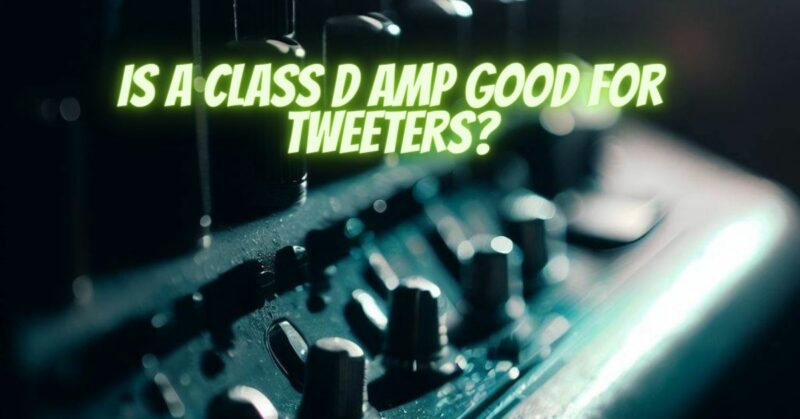The quest for audio excellence extends to every aspect of sound reproduction, including the delicate highs produced by tweeters. In the world of amplification, the choice of amplifier can significantly impact the sound quality of tweeters. Among various amplifier classes, Class D amplifiers have gained prominence for their efficiency and compact design. In this article, we’ll delve into the considerations, advantages, and potential challenges of using a Class D amplifier to drive tweeters, shedding light on whether this pairing is a harmonious match for achieving crystal-clear highs.
Understanding Class D Amplifiers:
Class D amplifiers are known for their efficiency and compact size. Unlike traditional analog amplifiers, Class D amplifiers utilize digital switching technology to rapidly switch the transistors on and off, minimizing energy waste and heat generation.
Suitability of Class D Amps for Tweeters:
Using a Class D amplifier for tweeters is a topic that raises both curiosity and caution. Here’s a closer look at the key factors to consider:
Advantages:
- Efficiency: Class D amplifiers are highly efficient, converting power efficiently and producing less heat compared to traditional amplifiers. This efficiency can translate to reduced strain on the tweeters.
- Compact Size: The compact design of Class D amplifiers makes them well-suited for applications where space is limited, such as in-car audio setups.
- High-Frequency Accuracy: Class D amplifiers are capable of accurately reproducing high-frequency signals, making them potentially suitable for driving tweeters.
- Power Handling: Many Class D amplifiers offer adjustable power settings, allowing you to match the power output to the requirements of the tweeters.
Considerations:
- Frequency Range: Tweeters primarily handle high-frequency signals. While Class D amplifiers can accurately reproduce high frequencies, the amplifier’s frequency response and crossover capabilities should be assessed.
- Crossover Integration: For optimal sound quality, it’s essential to integrate tweeters with an appropriate crossover network that matches the amplifier’s capabilities and the tweeters’ frequency range.
- Quality of Amplifier: The sound quality of a Class D amplifier varies based on the manufacturer, model, and design. Choose a reputable amplifier brand known for producing high-quality audio products.
Potential Challenges:
- Crossover Distortion: Some early Class D designs suffered from crossover distortion, which could impact the accuracy of high-frequency reproduction. However, modern Class D amplifiers have made significant improvements in this aspect.
- Matching Impedance: Ensuring that the amplifier’s impedance matches the tweeters’ impedance is crucial for avoiding mismatch-related issues.
Ideal Applications:
- Compact Audio Setups: Class D amplifiers are popular choices for space-limited setups, such as car audio systems, where driving tweeters with efficiency is essential.
- Efficient Audio Reproduction: In scenarios where efficiency and power conservation are important, Class D amplifiers can provide energy-efficient amplification for tweeters.
Using a Class D amplifier for tweeters is a possibility, but careful consideration of the amplifier’s frequency response, power handling, crossover integration, and overall sound quality is essential. Modern Class D amplifiers have made significant advancements in accuracy and efficiency, potentially making them suitable for driving tweeters without compromising sound quality. However, it’s recommended to audition and test the combination of the amplifier and tweeters to ensure that the sonic characteristics align with your audio preferences and expectations. By understanding the strengths and limitations of Class D amplifiers and evaluating their compatibility with tweeters, you can create a harmonious audio setup that delivers clear, detailed highs for an immersive listening experience.


